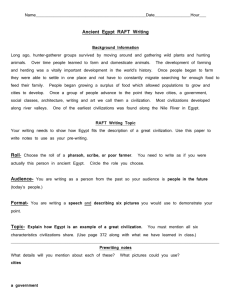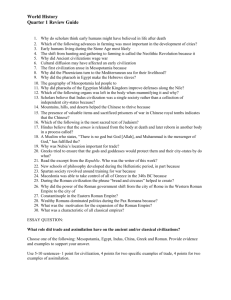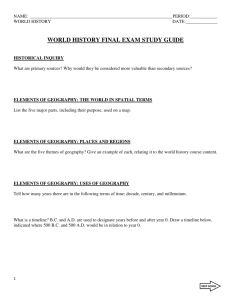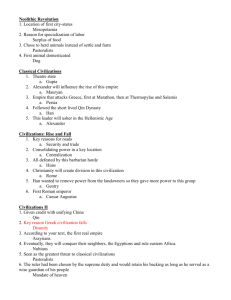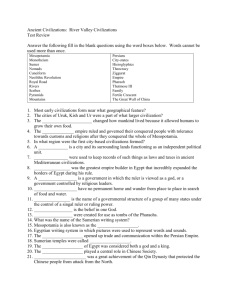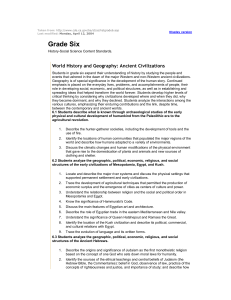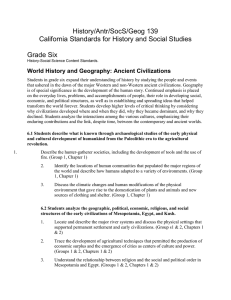6th Grade Social Science
advertisement
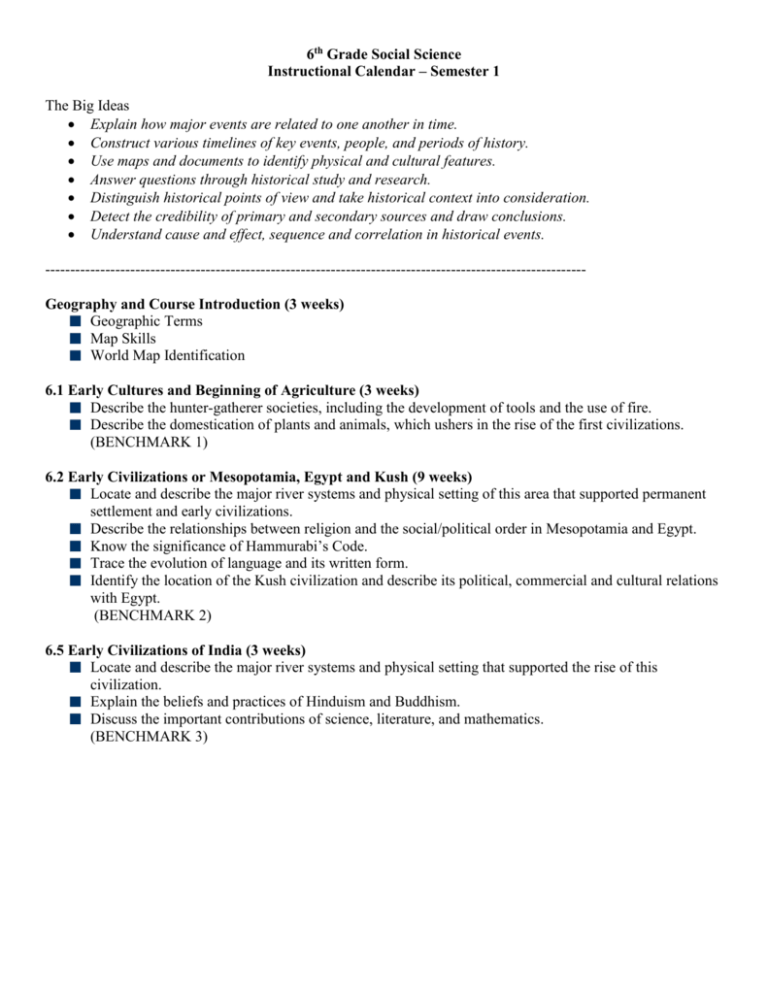
6th Grade Social Science Instructional Calendar – Semester 1 The Big Ideas Explain how major events are related to one another in time. Construct various timelines of key events, people, and periods of history. Use maps and documents to identify physical and cultural features. Answer questions through historical study and research. Distinguish historical points of view and take historical context into consideration. Detect the credibility of primary and secondary sources and draw conclusions. Understand cause and effect, sequence and correlation in historical events. -----------------------------------------------------------------------------------------------------------Geography and Course Introduction (3 weeks) Geographic Terms Map Skills World Map Identification 6.1 Early Cultures and Beginning of Agriculture (3 weeks) Describe the hunter-gatherer societies, including the development of tools and the use of fire. Describe the domestication of plants and animals, which ushers in the rise of the first civilizations. (BENCHMARK 1) 6.2 Early Civilizations or Mesopotamia, Egypt and Kush (9 weeks) Locate and describe the major river systems and physical setting of this area that supported permanent settlement and early civilizations. Describe the relationships between religion and the social/political order in Mesopotamia and Egypt. Know the significance of Hammurabi’s Code. Trace the evolution of language and its written form. Identify the location of the Kush civilization and describe its political, commercial and cultural relations with Egypt. (BENCHMARK 2) 6.5 Early Civilizations of India (3 weeks) Locate and describe the major river systems and physical setting that supported the rise of this civilization. Explain the beliefs and practices of Hinduism and Buddhism. Discuss the important contributions of science, literature, and mathematics. (BENCHMARK 3) 6th Grade Social Science Instructional Calendar – Semester 2 6.6 Early Civilizations of China (3 weeks) Locate and describe the origins of Chinese civilization in the Huang-He Valley during the Shang dynasty. Explain how geographic features isolated China from the rest of the world and made governing difficult. Identify the political/cultural problems of Confucius’ time and how he tried to solve them. Detail the political contributions on the Han and Qin dynasties. Cite the significance of the Silk Road on trade and commerce. (BENCHMARK 4) 6.3 Ancient Hebrews (3 weeks) Describe the origins and significance of Judaism as the first monotheistic religion. Discuss the locations of the settlements and movements of Hebrew peoples. Identify the sources of ethical teachings and central beliefs of Judaism and describe the connections to the moral and ethical traditions of Western civilizations. 6.4 Ancient Greece (6 weeks) Discuss the connections between geography and the development of city-states in the Mediterranean region. Trace the transition from tyranny to early democratic forms of governments, including the importance of citizenship. State the differences between Athenian democracy and representative democracy. Explain the significance of Greek mythology to the ancient Greeks and the influence on modern literature and language. Outline the founding, expansion and political organization of the Persian Empire. Trace the rise of Alexander the Great and the spread of Greek culture eastward into Egypt. Describe the lasting contributions of important Greek figures in the arts and sciences. (BENCHMARK 5) 6.7 The Development of Rome (6 weeks) Identify the location and describe the rise of the Roman Empire. Describe the government of the Roman Republic and its significance in the development of the Roman Empire. Identify the location and describe the reason for the growth of Roman territories. Describe the circumstances that led to the spread of Christianity in Europe. Discuss Roman are and architecture, technology and science, literature, language and law. (BENCHMARK 6)
